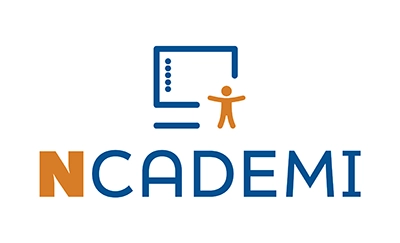Braille Accessibility in State Assessments

This webinar introduced a new guide from NCADEMI and the OCALI AT&AEM Center, Braille Accessibility in State Assessments: Roles, Responsibilities, and Strategies. This comprehensive resource is designed to support State and Local Education Agencies (SEAs and LEAs) and assessment vendors with creating accessible assessment systems for braille readers.
Participants learned why braille accessibility is essential for valid and fair assessments, how to use the guide to support planning and implementation, and practical steps to get started. Key components, such as accommodations for braille users, test development and production standards, SEA/LEA responsibilities, and collaborative strategies for improving access to state assessment for braille readers were explored.
Who Should Watch?
- SEA and LEA assessment leaders
- Braille assessment support personnel
- Assessment vendors
- Special education directors
- Braille service providers
- Accessible media producers
Presenters
- Jena Fahlbush,
Technical Assistance Specialist - Jen Govender, AT&AEM Specialist,
OCALI AT&AEM Center
Recording & Slides
Resources
- Braille Accessibility in State Assessments: Roles, Responsibilities, and Strategies
- Paths to Literacy – Offers targeted strategies, sample activities, and assessment supports for braille readers at all levels
Webinar Chat Highlights
Participants emphasized several key advocacy priorities to support equal access to state assessments for students who read braille, including:
- Expanding the availability of state-provided braille practice materials;
- Strengthening collaboration between state and local education agencies (SEAs and LEAs);
- Ensuring that accessibility experts and related critical perspectives are included early in the procurement process; and
- Embedding accessibility requirements directly into request for proposals (RFPs) and contracts so vendors are held accountable for delivering compliant materials.
Summary of Q&A Discussion
How do you handle different level braille readers?
Supporting braille readers at different levels requires aligning materials and tools with each student’s instructional needs and their IEP or 504 Plan. Early or emergent readers often use uncontracted braille, while more experienced readers typically use contracted braille (UEB) and may use Nemeth Code for math and science. Assistive technology, such as refreshable braille displays or braille notetakers, can be used if they are part of the student’s regular classroom practice and permitted under testing guidelines. To ensure fair access during assessments, students should have opportunities to practice with braille-formatted test items, and test administrators must be trained to support accessibility without modifying the test content or intent.
Does BANA offer guidance on differentiating the needs between early and experienced braille readers?
While BANA Guidelines and Standards for Tactile Graphics does not explicitly differentiate between early and experienced braille readers in instruction or assessment, Unit 11 on graphics for early grades acknowledges developmental needs and support accessibility. BANA allows for both uncontracted and contracted braille formats based on a student’s instructional level and promotes consistency between instructional and assessment materials. For more targeted strategies, educators can refer to resources like BANA Guidelines for the Transcription of Early Educational Materials from Print to Braille, state assessment manuals, and instructional tools such as APH’s Building on Patterns, which support differentiated instruction and the transition between braille formats.
Call to Action
Use one of the conversation starters and/or the draft email provided to spark a dialogue with a colleague or administrator about the importance of providing braille for state assessment. Reflect on the gaps and opportunities that result from the exchange.
Conversation Starters
Use these prompts to guide a short, informal conversation with a peer, supervisor, or team member:
- “How do we currently ensure that all braille users have equal access to state tests?”
- “Who ensures that all students, including those who use braille, have accessible assessments in our school or across our district?”
- “What policies or practices do we already have in place that relate to braille assessment?”
- “Have we ever assessed whether our current practices for administering state tests in braille are fair and equal?”
- “Where do you think we have opportunities to improve state test accessibility for students who use braille?”
Draft Email for Starting the Conversation
Copy, paste, and personalize this message:
Subject: Quick Conversation About Braille Accessibility in State Tests [Agency/School]
Hi [Name],
I’m attending a webinar about braille accessibility in state testing, which has me thinking about how our [district/agency] approaches braille accessibility. More specifically, I’m wondering how we ensure students who are braille users can access the state test equally and fairly. What do you think about using the recently released guide, Braille Accessibility in State Assessments: Roles, Responsibilities, and Strategies, as a framework for how we ensure braille users can fully participate in state tests?
I’d love to have a quick conversation with you to better understand what’s currently in place and where we might have opportunities to strengthen our practices. It can be as simple as a 15-minute chat sometime this week or next.
Let me know if you’re open to that. I look forward to hearing from you!
Thanks so much,
[Your Name]
